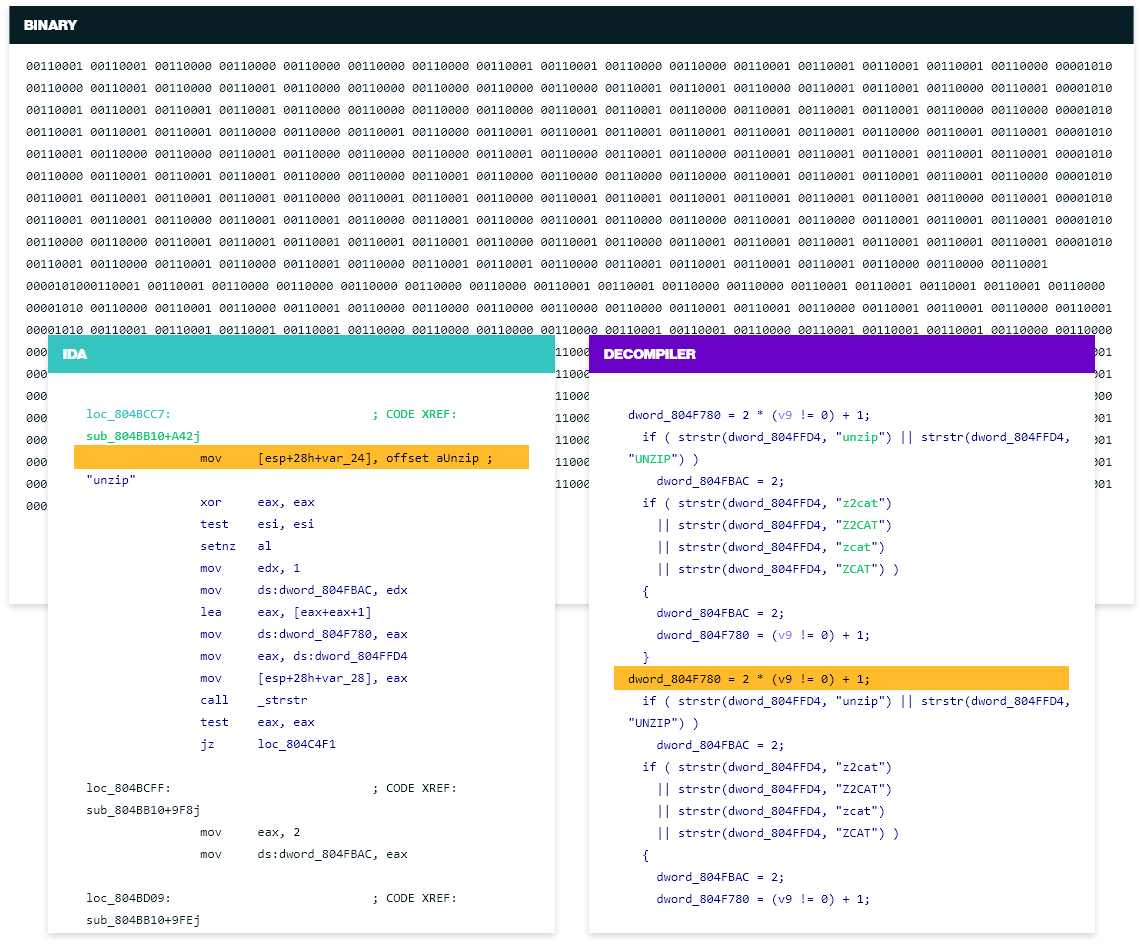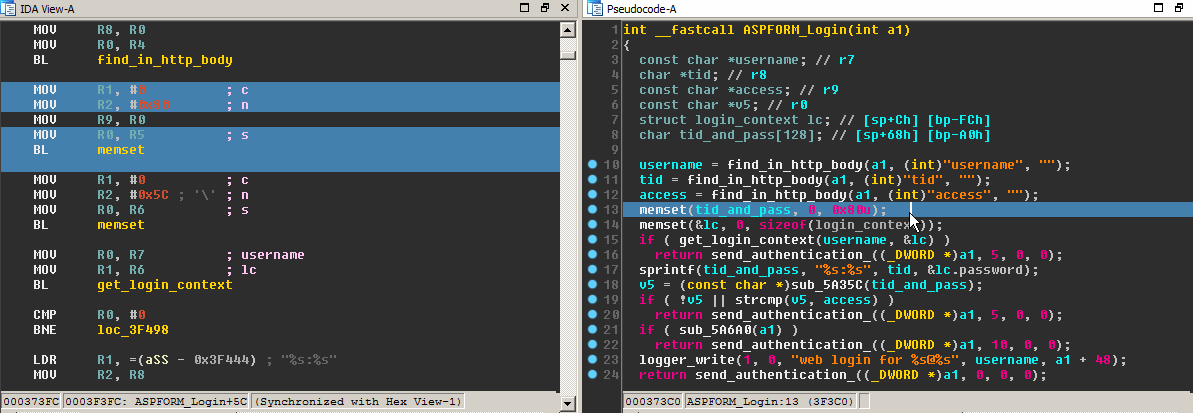

Users have created plugins that allow other common scripting languages to be used instead of, or in addition to, IDC. For example, external symbol tables can be loaded thereby using the function names of the original source code. Most frequently scripts are used for extra modification of the generated code.

Some helpful scripts are provided, which can serve as the basis for user written scripts. "IDC scripts" make it possible to extend the operation of the disassembler. A typical IDA user will begin with an automatically generated disassembly listing and then convert sections from code to data and vice versa, rename, annotate, and otherwise add information to the listing, until its functionality becomes clear. However, the nature of disassembly precludes total accuracy, and a great deal of human intervention is necessarily required IDA has interactive functionality to aid in improving the disassembly. function locations, function stack frames, and function calling conventions.cross-references between code and data in the program.In addition to performing basic disassembly, IDA also automatically annotates disassembled programs with information about: IDA disassembles a compiled program back into an assembly language representation. In January 2008, Hex-Rays assumed the development and support of DataRescue's IDA Pro. In 2005, Guilfanov founded Hex-Rays to pursue the development of the Hex-Rays Decompiler IDA extension. In 1999, DataRescue released the first version of IDA Pro with a GUI, IDA Pro 4.0.

Initial versions of IDA did not have a graphical user interface (GUI), and ran as an extended DOS, OS/2, or Windows console application. In 1996, the Belgian company DataRescue took over the development of IDA and began to sell it as a commercial product, under the name IDA Pro. Ilfak Guilfanov began working on IDA in 1991, and initially distributed it as a shareware application. IDA has been referred to as the "de-facto industry standard disassembler".

IDA is used widely in software reverse engineering, including for malware analysis and software vulnerability research. A decompiler plug-in, which generates a high level, C source code-like representation of the analysed program, is available at extra cost. It can also be used as a debugger for Windows PE, Mac OS X Mach-O, and Linux ELF executables. It supports a variety of executable formats for different processors and operating systems. The Interactive Disassembler ( IDA) is a disassembler for computer software which generates assembly language source code from machine-executable code.


 0 kommentar(er)
0 kommentar(er)
